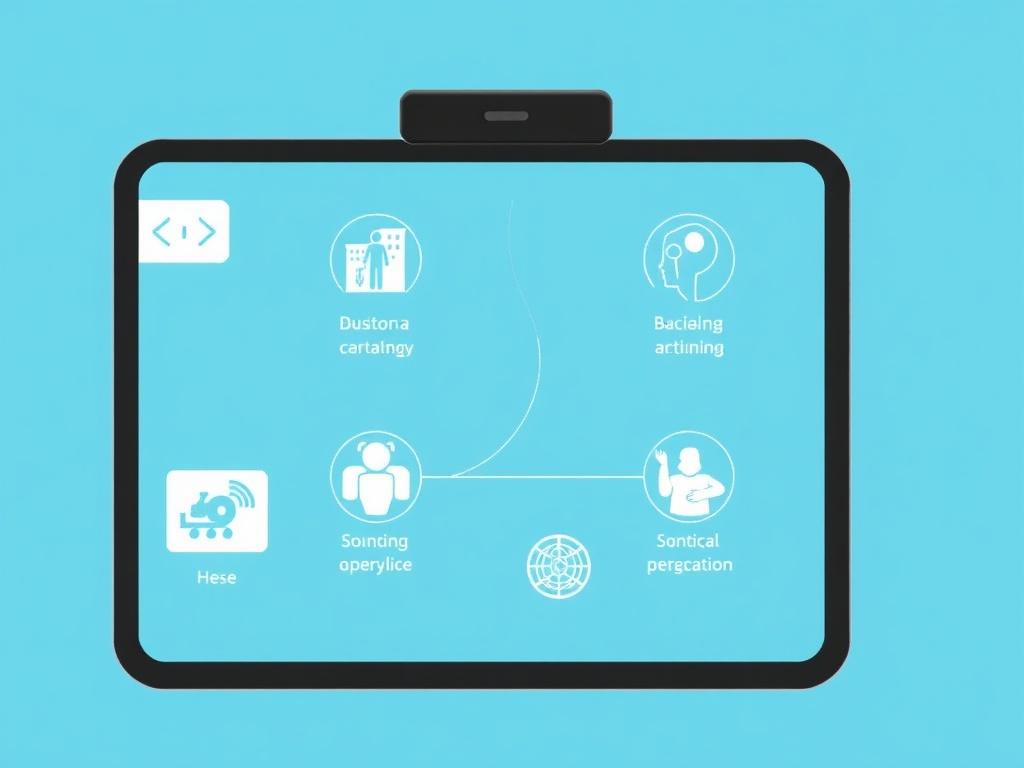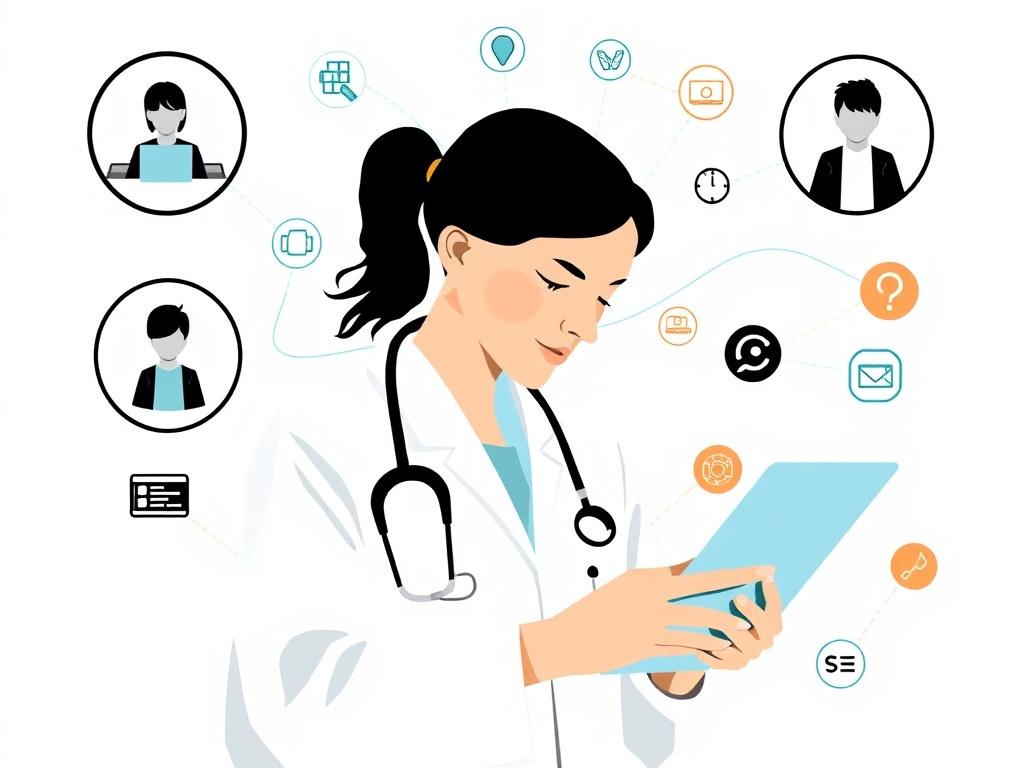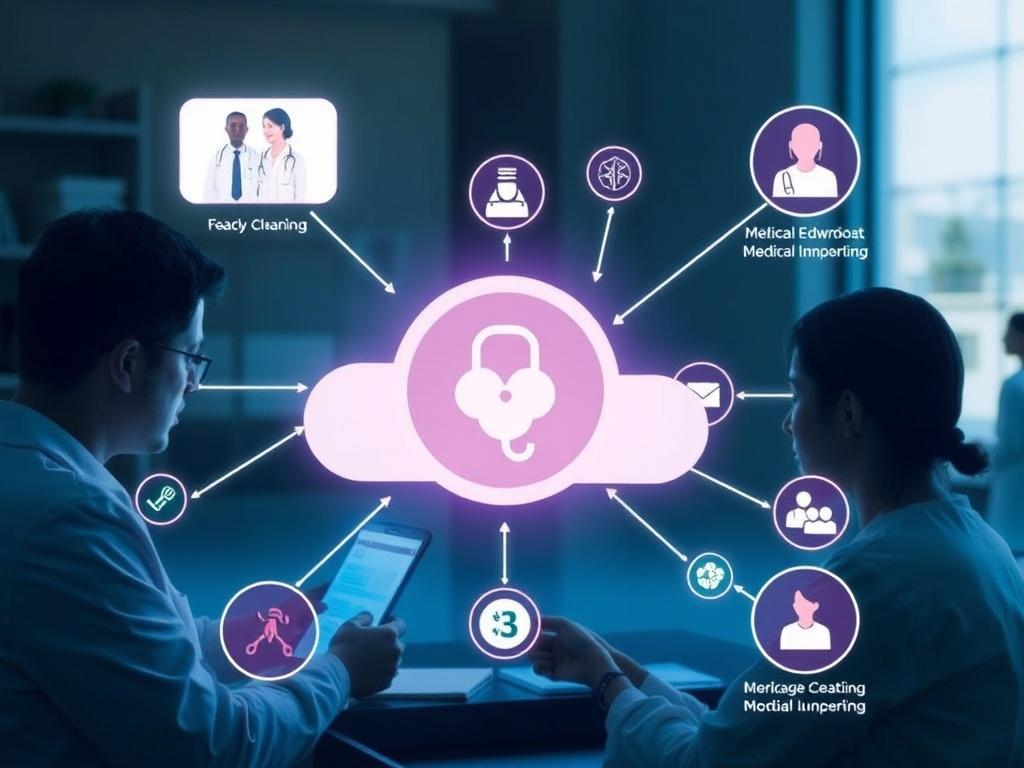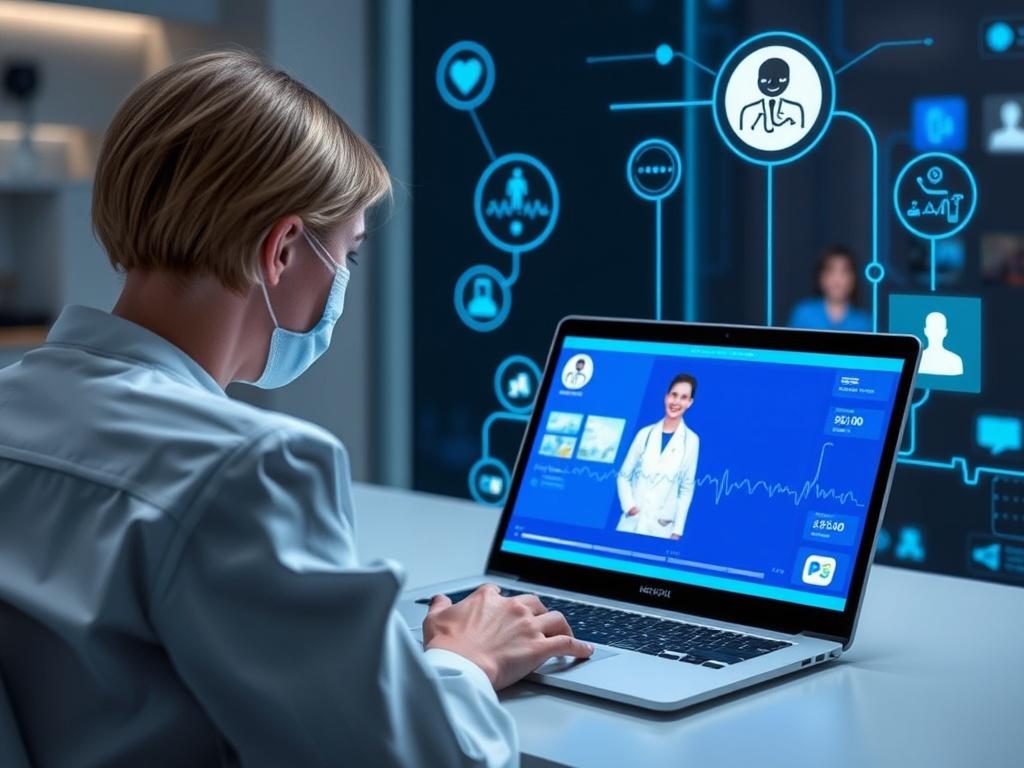- What is e-health? Breaking down a big idea into simple pieces
- Historical context: how we got here
- Telemedicine: the modern face of remote care
- Types of telemedicine encounters
- Applications of medical follow-up: what apps do and why they matter
- Common categories of follow-up applications
- Devices and technologies that power e-health
- Edge computing, AI and real-time analytics
- Benefits of e-health for patients, clinicians and systems
- Real-world impacts and measured outcomes
- Challenges and barriers: why e-health isn’t a magic bullet
- Privacy, ethics and trust
- Regulation, standards and certification
- Standards and interoperability
- Design and user experience: why good UX matters
- Behavior change and long-term engagement
- Business models and funding: who pays for e-health?
- Partnerships and ecosystems
- Implementation: steps to adopt e-health in a real clinic or system
- Common pitfalls to avoid
- Case studies: practical examples of e-health in action
- Lessons from success
- Future trends: what’s coming next in e-health
- Speculative but plausible innovations
- Practical tips for patients: how to navigate e-health safely and effectively
- Practical tips for clinicians and managers
- Key stakeholders in e-health ecosystems
- Measuring success: what metrics matter
- Final practical checklist for launching an e-health project
- Conclusion
The phrase “La e-santé” might sound technical, even a little distant, but at its heart it’s about people — patients, families, clinicians, caregivers — trying to connect, manage health, and make better decisions using digital tools. In this article I’ll walk you through the whole landscape of e-health: what it includes, how telemedicine works, the variety of medical follow-up applications, the hardware that makes it possible, the benefits and the pitfalls, and what the future could bring. I’ll keep things conversational and practical so you come away with both a clear picture and useful takeaways.
What is e-health? Breaking down a big idea into simple pieces
E-health, or e-santé in French, is a broad term. It covers the use of information and communication technologies to deliver healthcare services, monitor health, and support well-being. That can range from a doctor doing a video consultation with a patient to a smartphone app reminding someone to take their medication, to an algorithm analyzing medical images in a hospital. The common thread is using digital tools to improve access, quality, and efficiency of healthcare.
The beauty of e-health is its flexibility. For a rural patient, it can mean access to a specialist who lives hundreds of miles away. For a busy parent, it can mean an app that tracks a child’s asthma symptoms. For a healthcare system, it means better data flows, fewer missed appointments, and the potential to shift care out of hospitals and into people’s homes. But the variety also brings complexity — different technologies, different regulations, and different expectations from users.
Historical context: how we got here
E-health didn’t appear overnight. Over several decades we saw incremental changes: electronic health records replaced paper charts; mobile phones became smart and connected; broadband internet spread to homes; wearables and sensors became affordable. Telemedicine experiments date back to the 1960s and 70s in the form of telephone and radio consultations. The last ten years, and notably the COVID-19 pandemic, accelerated adoption drastically. Both patients and providers who had previously been wary found that a virtual visit could be convenient, safe, and clinically effective.
This history matters because it explains why motivations are mixed. Some changes were driven by technology companies wanting new markets. Some were pushed by clinicians seeking efficiency. Some were a public policy response to staff shortages and rising costs. Recognizing this mixed origin helps us understand the design trade-offs we see today.
Telemedicine: the modern face of remote care

Telemedicine is often the first thing people think of when they hear e-health. It refers to the delivery of clinical services remotely via telecommunication technologies. That includes video consultations, phone calls, text-based chat, and even asynchronous messaging where patients send photos or records and receive advice later.
One of the simplest appeals of telemedicine is convenience. Patients save travel time and waiting room stress. Clinicians can triage more efficiently. For chronic conditions like diabetes or hypertension, regular remote check-ins can help maintain control without constant in-person appointments. However, not all care can be delivered virtually — some consultations require physical examinations or procedures — and recognizing the limits of telemedicine is essential for safe practice.
Types of telemedicine encounters
There are a few common models:
- Real-time video consultations: Live video between patient and provider, mimicking a face-to-face visit.
- Audio-only care: Phone calls for consultations when video is not feasible.
- Asynchronous telemedicine: Store-and-forward, where images or data are sent and reviewed later.
- Remote patient monitoring: Continuous or periodic transmission of physiological data from home devices.
- Tele-ICU and specialist consultations: High-acuity remote support where specialists advise on complex cases.
Each model has strengths and appropriate use cases. Combining them strategically allows systems to offer better patient-centered care.
Applications of medical follow-up: what apps do and why they matter
Apps for medical follow-up — often called remote monitoring or patient self-management apps — are central to e-health. They help people track symptoms, record medication adherence, measure vitals, and communicate with care teams. Some apps are simple and focused: a pill reminder, a mood tracker, a blood glucose log. Others are complex ecosystems that integrate wearable data, lab results, clinician dashboards, and automated alerts.
Why do they matter? Health is largely managed between clinic visits. People live the majority of their lives outside hospitals and clinics. Apps extend the reach of care into those moments, providing continuity, timely data, and opportunities for early intervention. When designed and implemented well, these tools can prevent complications, reduce emergency visits, and empower people to take an active role in their health.
Common categories of follow-up applications
Here’s a practical table to summarize different types of e-health apps and what they do:
| Category | Main purpose | Typical users |
|---|---|---|
| Medication adherence | Remind patients to take medications; log doses | Chronic patients, elderly, polypharmacy cases |
| Chronic disease management | Monitor condition-specific metrics (glucose, BP, weight) | Diabetes, hypertension, heart failure patients |
| Symptom trackers | Record symptoms over time to detect patterns | People with migraines, mental health conditions, rheumatologic disease |
| Rehabilitation and physiotherapy | Guide exercises, monitor progress, provide reminders | Post-op patients, injury recovery |
| Mental health apps | Provide CBT tools, mood tracking, teletherapy access | People with anxiety, depression, PTSD |
| Remote monitoring platforms | Collect vitals from devices; alert clinicians to anomalies | High-risk patients, elderly, post-discharge monitoring |
Devices and technologies that power e-health
Beyond apps, e-health relies heavily on hardware and infrastructure. Wearables like smartwatches and continuous glucose monitors produce streams of health data. Home devices such as connected blood pressure cuffs, pulse oximeters, and smart scales feed structured numbers into apps. On the backend, cloud platforms, APIs, machine learning models, and secure messaging systems organize, analyze, and present data to both patients and care teams.
Interoperability — the ability for different systems to communicate — is critical. If a patient’s blood pressure from their home cuff can’t reach the clinic’s health record, its usefulness is limited. Standards like HL7 FHIR and APIs are increasingly used to bridge these gaps, but full integration remains a work in progress in many places.
Edge computing, AI and real-time analytics
Newer trends include moving computation closer to the device (edge computing) so quick analyses can be run locally, and using artificial intelligence to identify patterns and predict risk. For instance, AI may flag an irregular heart rhythm detected by a wearable for clinician review. These tools can highlight what’s important and reduce the signal-to-noise problem clinicians face, but they also introduce questions about accuracy, bias, and transparency.
Benefits of e-health for patients, clinicians and systems
E-health offers a range of clear benefits that explain why it has become mainstream:
- Improved access: Remote consultations remove geographic barriers and can bring specialists to underserved areas.
- Convenience: Less travel, more flexible scheduling, and care that fits into daily life.
- Continuous data: Regular monitoring can detect deterioration earlier than sporadic clinic visits.
- Empowerment: Tools that help people track and understand their health support better self-management.
- Cost control: Shifting appropriate care to lower-cost settings can reduce hospital admissions and emergency visits.
These benefits, however, are not automatic. Realizing them requires thoughtful design, training, and policies that support safe, equitable use.
Real-world impacts and measured outcomes
Studies have shown improvements in outcomes with certain e-health interventions: reduced hospital readmissions with remote monitoring after heart failure, better glycemic control with integrated diabetes apps, and increased adherence when medication reminders are combined with clinician follow-up. But evidence varies by condition and implementation. The most successful programs are often those that combine technology with human support — a nurse, coach, or clinician who reviews data and responds appropriately.
Challenges and barriers: why e-health isn’t a magic bullet

E-health faces several real-world obstacles:
- Digital divide: Not everyone has a smartphone, reliable internet, or digital literacy skills.
- Privacy and security: Health data are sensitive and subject to strict rules. Data breaches or weak protections undermines trust.
- Regulation and reimbursement: Payment models need to support remote care. Regulations must ensure safety but also enable innovation.
- Clinical workflow: New tools can disrupt clinician workflows and add administrative burden if not designed well.
- Data overload: Clinicians can be overwhelmed with streams of data unless systems filter and prioritize intelligently.
These challenges mean that e-health solutions often need more than technology — they need policy changes, training, and support structures.
Privacy, ethics and trust
Handling personal health data responsibly is both an ethical and legal requirement. Consent, data minimization, secure storage, and transparent data use policies are essential. Users must trust that the app or platform will protect their privacy. In addition, algorithms used for diagnosis or triage must be fair and explainable. Biases in data or models can harm marginalized groups. Building trust requires clear communication and accountability.
Regulation, standards and certification
Different countries have different regulatory regimes. In Europe, the EU Medical Device Regulation (MDR) and national agencies govern medical device classification, which can include certain apps. In the United States, the FDA regulates software that functions as a medical device, while telemedicine practice is also shaped by state laws and payer policies. Compliance with standards for data exchange, encryption, and identity management is common.
Regulation tries to balance safety with innovation. Overly burdensome rules can slow beneficial technologies, while too lax a regime can expose users to risk. Developers and health systems need legal and regulatory expertise to navigate this evolving space.
Standards and interoperability
Standards like HL7 FHIR for data exchange, DICOM for imaging, and OAuth/OpenID for secure authentication help systems connect. Certification schemes or approved app libraries (offered by some national health services) can guide clinicians and patients toward vetted, secure solutions. Interoperability makes it possible to build integrated care pathways rather than isolated digital islands.
Design and user experience: why good UX matters
An e-health tool can be clinically brilliant and still fail if patients and clinicians don’t use it. Simplicity, clear language, accessibility, and culturally sensitive design are essential. For older adults, larger fonts, voice prompts, and simple workflows make a big difference. For multilingual populations, localization matters.
Co-design — building tools with patients and clinicians — produces better outcomes. When users feel heard in the development process, adoption and sustained engagement improve. Good UX reduces frustration, errors, and the need for technical support.
Behavior change and long-term engagement
One of the biggest practical hurdles is keeping people engaged with apps over time. Initial enthusiasm often fades. Techniques that work include personalization, timely reminders, social support features, gamification elements (used carefully), and meaningful feedback that shows progress. Integration with clinical care — so users see that their effort leads to concrete actions by clinicians — can sustain motivation.
Business models and funding: who pays for e-health?
Sustainable business models are crucial. Several funding sources exist:
- Public health systems: National health services may adopt and pay for e-health if cost savings and outcomes are clear.
- Insurance reimbursement: Private insurers and public payers increasingly reimburse telemedicine and remote monitoring.
- Direct-to-consumer: Some apps sell subscriptions or premium features directly to users.
- Employer health programs: Companies offer digital health services to employees as part of wellness programs.
- Device and hardware manufacturers: Sell devices that work with proprietary platforms.
Each model has implications for equity and design. For example, direct-to-consumer apps may exclude lower-income people, while publicly funded programs may have strict procurement processes.
Partnerships and ecosystems
Successful e-health often involves partnerships between clinicians, hospitals, tech companies, device manufacturers, and payers. An effective ecosystem aligns incentives: the tech company makes a usable product; clinicians get workflows that improve care; payers see cost savings. Clear agreements about data ownership, responsibilities, and revenue sharing are essential to avoid conflicts later.
Implementation: steps to adopt e-health in a real clinic or system
If a clinic wants to add telemedicine and follow-up apps, a stepwise approach works best:
- Assess needs: Identify clinically relevant problems telemedicine could solve.
- Engage stakeholders: Involve clinicians, IT, patients, and administrators early.
- Choose technology: Prioritize interoperability, security, and usability.
- Pilot small: Start with a limited patient group and learn fast.
- Train staff and patients: Offer clear guides and support channels.
- Integrate with workflows: Ensure data flows into clinical records and scheduling systems.
- Measure outcomes: Track usage, clinical results, costs, and satisfaction.
- Scale carefully: Expand once the pilot shows success and improvements are made.
This approach reduces risk and builds confidence across the organization.
Common pitfalls to avoid
Watch out for these common mistakes:
- Rushing to deploy without clinician buy-in.
- Choosing flashy features over core reliability and privacy.
- Failing to train staff or provide support.
- Ignoring integration with electronic health records.
- Underestimating the resources needed to sustain the service.
Learning from others’ experiences can save time and money.
Case studies: practical examples of e-health in action
Real-world examples help ground the concepts:
- A rural primary care network that used telemedicine to connect patients to mental health specialists, reducing wait times and improving access for remote communities.
- A cardiology clinic that deployed home blood pressure monitors and an app to monitor heart failure patients after discharge, cutting readmissions by identifying fluid retention early.
- A diabetes program that combined continuous glucose monitors with coaching via an app, helping patients lower average blood sugar and gain confidence in self-management.
Each program succeeded because the technology matched a clear clinical need, staff were trained, and data were acted upon in a timely way.
Lessons from success
Common features of successful programs include leadership commitment, patient-centered design, reimbursement models that work, and a willingness to iterate. Technology alone never solves a problem — it amplifies the quality of the processes and people around it.
Future trends: what’s coming next in e-health
The next few years will likely bring several developments:
- Deeper integration of AI in diagnosis, triage, and personalized recommendations.
- Wider use of passive sensing and ambient monitoring in homes for elder care.
- Improved interoperability, with health data flowing more seamlessly across providers and platforms.
- Greater regulatory clarity and standardized certification for digital therapeutics and medical apps.
- More hybrid care models blending virtual and in-person visits tailored to patient needs.
These trends imply more convenience and personalized care, but they also require careful governance to avoid misuse and unequal access.
Speculative but plausible innovations
Imagine a world where your home assistant gently prompts medication at optimal times, your smart band detects early signs of infection, and your clinician receives summarized risk alerts prioritized by AI — all while your health records remain private and under your control. Achieving that vision demands technical progress, policy alignment, and public trust.
Practical tips for patients: how to navigate e-health safely and effectively
If you’re a patient curious about using telemedicine or a follow-up app, here are practical steps:
- Ask your clinician which apps are recommended and whether they integrate with your medical record.
- Choose apps from reputable providers, check privacy policies, and avoid sharing unnecessary personal data.
- Ensure you have a private space and reliable internet for teleconsultations.
- Keep a simple backup plan (phone call) if video fails.
- Use apps consistently and share trends with your clinician rather than isolated numbers.
- Report any technical or privacy concerns to your provider promptly.
Being an informed user helps you get the most benefit while protecting your privacy.
Practical tips for clinicians and managers
Clinicians and health managers can maximize impact by:
- Defining specific clinical pathways where telemedicine and monitoring add clear value.
- Ensuring workflows, documentation, and liability coverage are clarified.
- Training staff on communication best practices for virtual visits.
- Setting thresholds for alerts so that data don’t overwhelm teams.
- Collecting metrics to evaluate clinical outcomes, patient satisfaction, and cost-effectiveness.
Successful programs often have simple, measurable goals and allocate resources to support ongoing use.
Key stakeholders in e-health ecosystems

E-health involves many players. Here are the main stakeholders and their interests:
| Stakeholder | Primary interest |
|---|---|
| Patients | Access, convenience, privacy, health outcomes |
| Clinicians | Clinical effectiveness, workflow efficiency, liability clarity |
| Health systems | Cost control, capacity optimization, quality metrics |
| Payers | Cost-effectiveness, reduced unnecessary care |
| Technology vendors | Product adoption, integration, revenue models |
| Regulators | Safety, privacy, equitable access |
Measuring success: what metrics matter
To know if an e-health program is working, measure both clinical and operational outcomes:
- Clinical: symptom control, hospitalization rates, biomarker improvements.
- Utilization: number of teleconsults, missed appointments, time to intervention.
- Experience: patient satisfaction, clinician satisfaction, ease-of-use scores.
- Economic: cost per patient, ROI, reduction in avoidable care.
- Equity: access differences across demographics and geography.
Regular evaluation enables continuous improvement and demonstrates value to funders and users.
Final practical checklist for launching an e-health project
Before you launch, run through these items:
- Clear clinical objective and target population.
- Stakeholder engagement and governance structure.
- Technology selection with security and interoperability checks.
- Pilot plan with evaluation metrics and feedback loops.
- Training materials and technical support plan.
- Data protection and consent procedures.
- Funding or reimbursement arrangement.
- Scaling strategy with responsible timelines.
A concise checklist can prevent rushed decisions and costly rework.
Conclusion
La e-santé — telemedicine and medical follow-up applications — is transforming how we access and manage health, bringing care closer to daily life and offering powerful tools for prevention, monitoring, and treatment. The potential is vast: better access for rural and underserved communities, more efficient use of clinical time, and data-driven care that detects problems earlier. Yet the road to realizing that potential is paved with tough choices: designing for equity, protecting data privacy, integrating with clinical workflows, and making sure the human touch remains central. The most successful e-health initiatives combine simple, patient-centered design, strong clinical involvement, clear governance, and measurable goals. If you’re a patient, a clinician, or a health system leader, start small, learn fast, and remember that technology is an amplifier — it magnifies the strengths and the weaknesses of the care system it serves. When thoughtfully implemented, e-health can be a pragmatic bridge to better health for many people.
Как вам статья?







